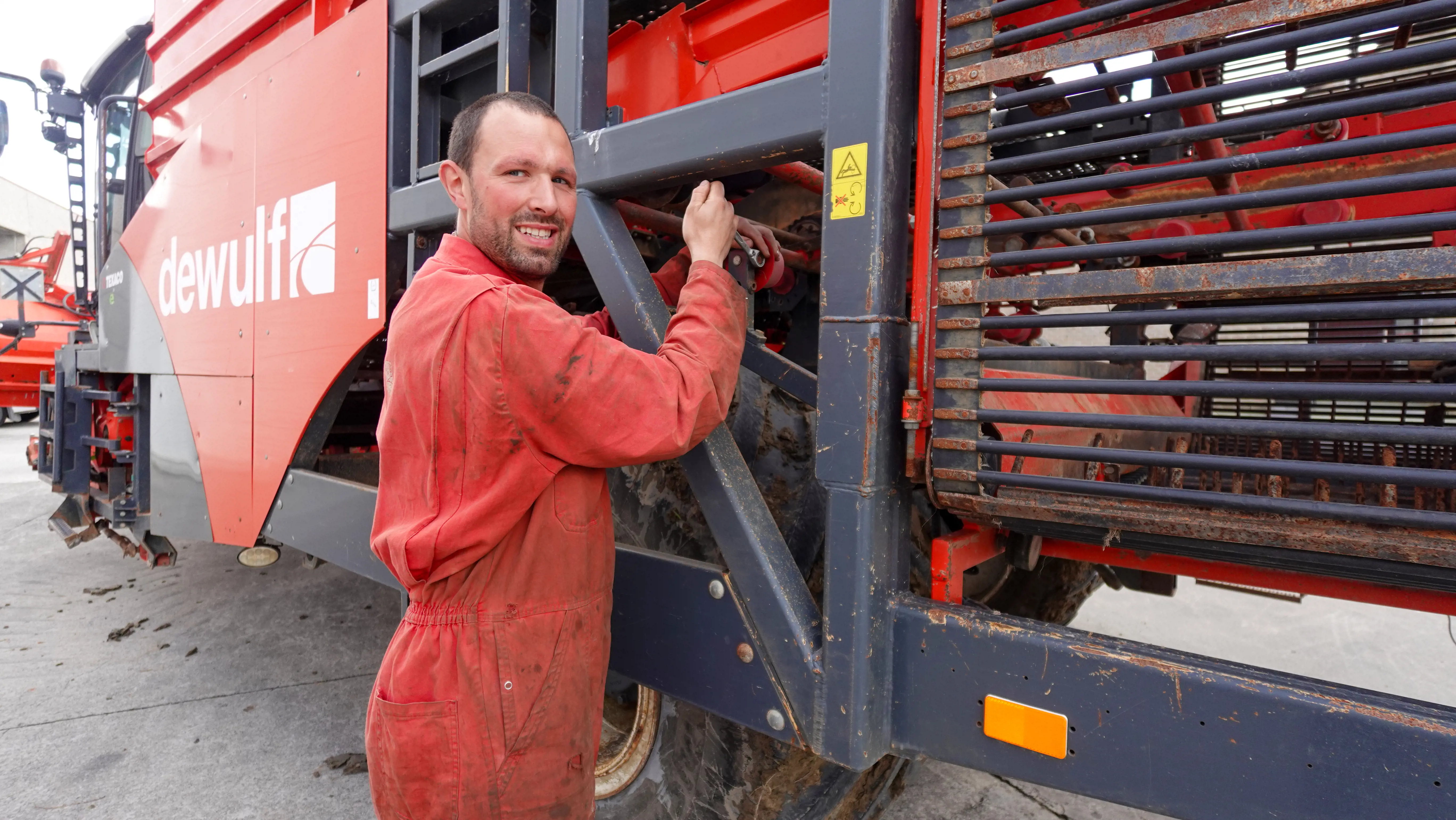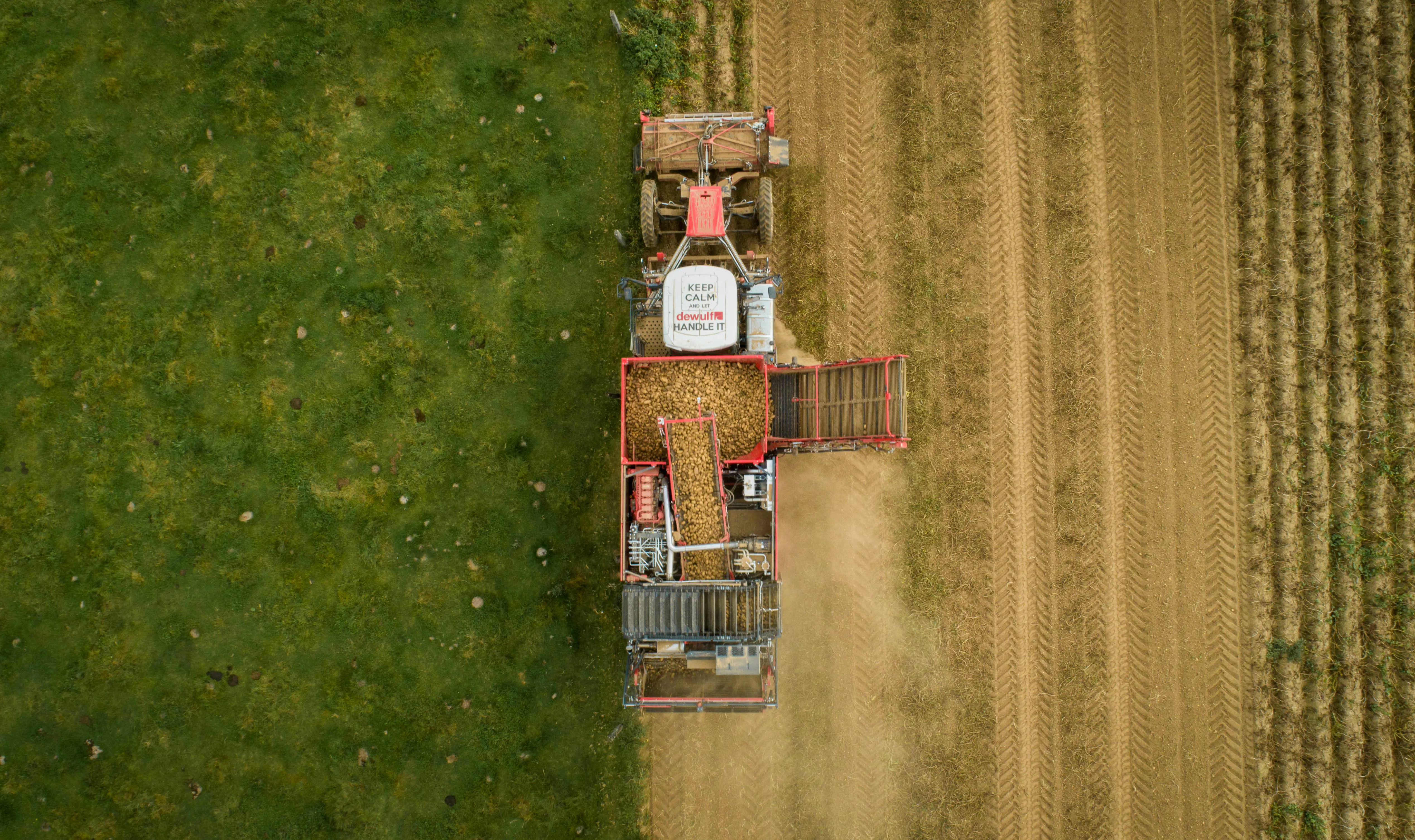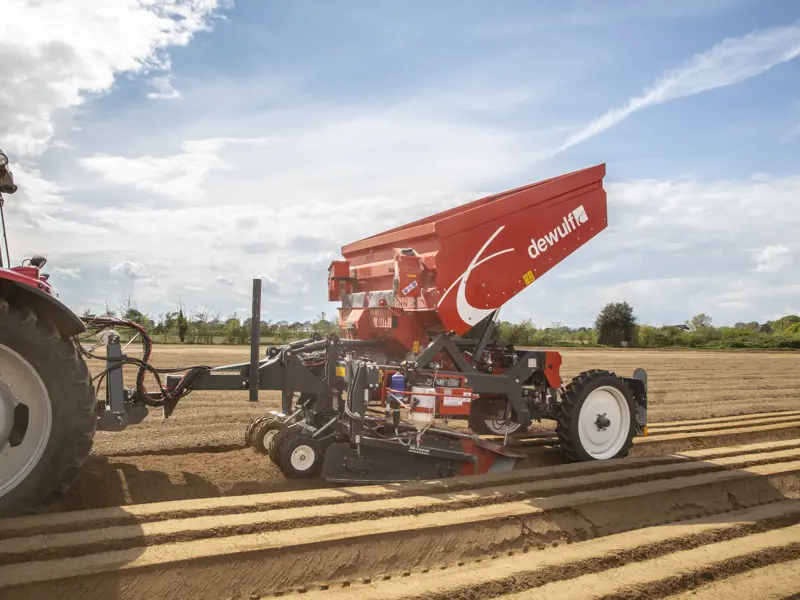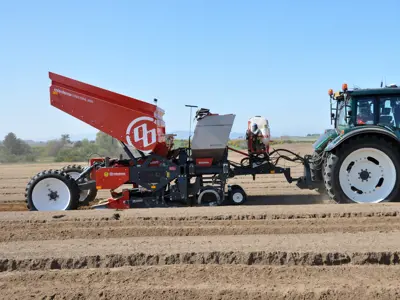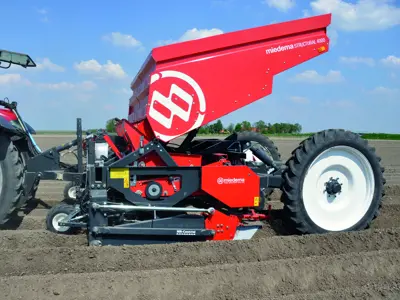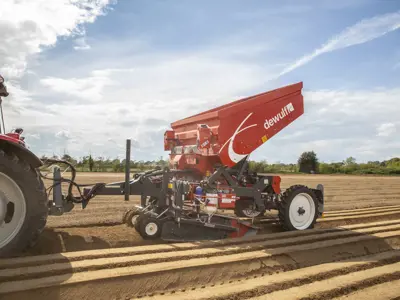Why the Structural belt planter is the best choice for you
03/10/2024
As a potato grower or contractor, you are always looking for ways to optimise and make the planting process more efficient. An important aspect of this is selecting the right planter for your specific needs.
The Structural belt planters from Dewulf Group
A Structural planter is often a very compelling option to consider. Within Dewulf Group, there are the 4-row Structural 4000 (MS4000) and the smaller, 2-row sibling, Structural 2000 (MS2000), along with the 3-row variant, Dewulf Structural 30, introduced in 2017.
This machine line offers various advantages over other planters, particularly when dealing with different seed potato sizes or long, almost banana-shaped potatoes.
Agronomic benefits of the Structural
The choice of a Structural belt planter over a traditional cup planter is primarily based on agronomic benefits. Large potatoes, for instance, require more space to grow and demand more energy and resources to develop.
The standard size of seed potatoes for planting typically varies between 28 and 55 millimetres in diameter. These are often subdivided into small (28-35 mm) and large (35-55 mm) categories. The larger seed potatoes are more commonly used because they usually produce more tubers per plant. The choice of a particular size may depend on the specific growing conditions and the desired end result.
Quickly and easily changing between seed sizes
One of the biggest advantages of the Structural belt planter is the ease and speed with which you can switch between different sizes and shapes of seed potatoes. Unlike a cup planter, where adjusting to various seed sizes can be time-consuming, the Structural planter allows for much simpler and faster conversion. Therefore, manual pre-sorting is not an absolute necessity in every situation. This makes the machine ideal for growers who frequently switch between different varieties and lots.
Additionally, a belt planter can more easily plant pre-germinated seed potatoes, which has a very positive effect on the final yield.
Suitable for long, banana-shaped seed potatoes
Moreover, the Structural is particularly well-suited for planting long (e.g. Spunta) and elongated, oval-shaped (or banana-shaped) potatoes, a task that a cup planter may struggle with.
The belt technology of the Structural ensures that this type of seed potato can be planted smoothly and without blockages. This makes the machine versatile, even with unsorted batches, due to the ease of adjustment.
Speed and efficiency
The speed of the Structural planter is another key advantage, particularly at short planting distances (<30 cm). Although at greater planting distances, speed can be limited by other factors such as the capacity of the ridging hood, the Structural remains the fastest belt planter within its market segment, with speeds of up to 11 km/h. And because the belts span the entire width of the bed, soil from the bunker is more easily expelled from the machine, further enhancing efficiency.
The importance of the right planter for various growers
For seed potato growers handling larger tonnages and sizes, the Structural belt planter is certainly relevant, just as it is for table potato growers. This machine offers them the ability to plant faster than with a cup planter, thereby improving the purely agronomic end result.
However, for growers planting standard-sized seed potatoes, often used for producing chip potatoes in countries like Belgium, a cup planter may suffice. A cup planter (and the technology behind it) is significantly less expensive to buy than the Structural belt planter. The price difference makes the use of a Structural belt planter less appealing for this group, as this type of seed potato generally yields little to no increase in profitability. For these growers, this machine may only be an option if there is a significant need for faster planting speeds.
Conclusion: The customer the Structural belt planter fits best
The Structural belt planter offers several advantages over a cup planter, particularly when planting large potatoes, potatoes of varying sizes or banana-shaped potatoes. For potato growers, contractors and large-scale farmers cultivating seed and table potatoes, this machine can prove to be a highly valuable investment.
When selecting the right planter, it is important to consider your specific needs and objectives. The Structural belt planter may not be the best choice for every grower, but for certain types of growers, it can make a significant difference in optimising their planting process.

 English
English
 Nederlands
Nederlands
 Deutsch
Deutsch
 Français
Français
 Polski
Polski
 Espagnol
Espagnol
 русский
русский

